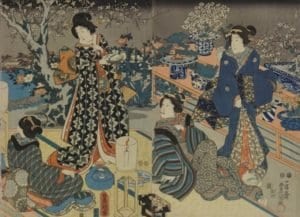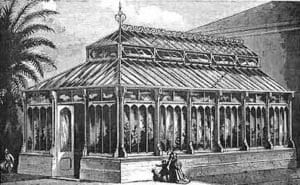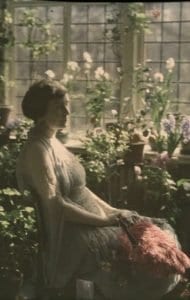Today, we see plants all around our offices, homes and interior settings, but this has not always been the case. Here is a brief history on the evolution of indoor plants and how we have grown to love them so much:

Bonsai “Akirafutokoro Prince” (706 AD). Image courtesy of Ritsumeikan University
From as early as 1,000 B.C., the Chinese grew plants in the home as a symbol of wealth. Additionally, they believed it gave novice gardeners an opportunity to enhance their gardening skills all year round, isolating the plants from harsh outdoor elements.

Image courtesy of www.history.com
One of the Seven Ancient Wonders of the World, the Hanging Gardens of Babylon were cultivated by King Nebuchadnezzar II around 610 B.C. for his Queen Amytis as a botanical haven. The fragrant flowers, and palm, cedar and date trees were thought to hang down from the ceilings of the gardens.
“Columbus sailed the ocean blue in 1492” with tropical plants in tow! Ever since Columbus landed in the Bahamas, tropical plants and trees have been transported across the oceans. This allowed those living in cooler conditions a “taste of the tropics,” as these plants are ideal in warm, humid conditions, making them perfect houseplants!

Image courtesy of www.microfarmgardens.com
Houseplants didn’t garner much mainstream attention until the 17th century when Sir Hugh Platt, an English agricultural authority, wrote about cultivating plants indoors in his tome “The Garden of Eden” (1652). After that, the first glasshouses, called greenhouses today, began to take shape with the purpose of housing exotic plants.
Plants were not always considered a positive addition to the interior of the home during this era; in fact, it was believed that interior plants had the potential to suffocate one while sleeping due to the carbon dioxide emissions from the plants at night. This myth was quickly debunked when scientists discovered that the carbon dioxide emissions from plants in the bedroom were so minute, there was little risk.

Image courtesy of www.shoperesne.com
By the Victorian era, houseplants were becoming more popular. Poorly lit houses and high levels of pollution caused by coal fires and gas lanterns made for harsh conditions for some of the more delicate flora. Hardier varieties, like the aspidistra (otherwise known as the “cast iron plant”), became a mainstay.
As time went on, architecture and technology gave way for more houseplant options. Homes were built with higher ceilings, more floors, larger windows and central heating, creating a more livable environment for squiggly ferns and blue and blue-purple grasses – which were quite popular in England during this time.
Fast-forward more than 100 years and houseplants are popular in today’s culture. If you need help determining what indoor plants will work best in your environment, contact the Green Team at Leafscape today!
